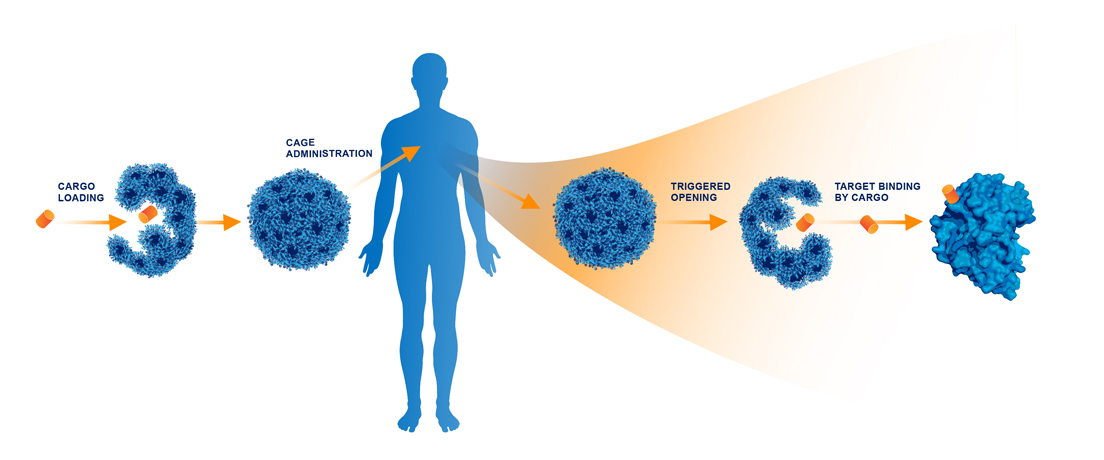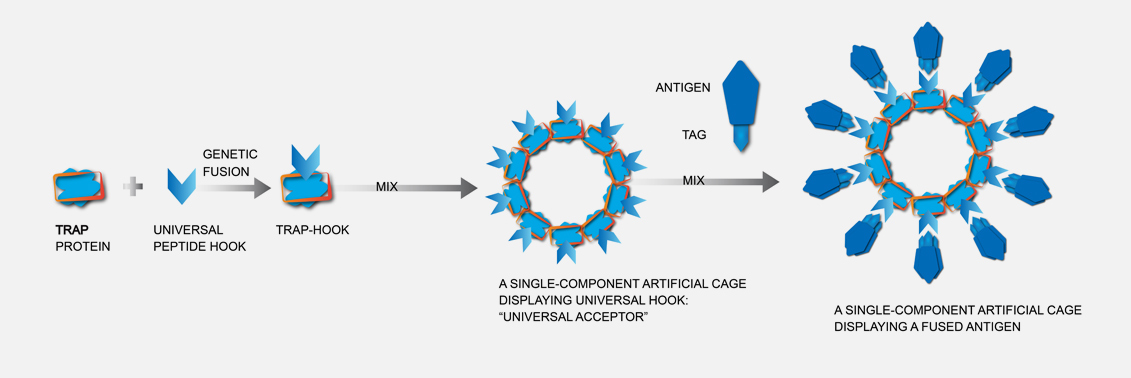- Cages are formed by the modification of the component protein resulting in triggered formation of protein cages
- Our lead protein cage technology comprises multiple copies of the TRAP (trp RNA-binding attenuation protein) 11mer. These rings are triggered to assemble into the final cage structure by the addition of AuI which forms 120 S-AuI-S “staples” between rings
- Unique abilities of our protein cage technology allows for programmable opening and closing
Our Technology
- Cages are ultra stable and able to withstand the temperature above 100 degrees Celsius
- Cages have unique geometry – a snub-cube structure not seen for any other protein cage
- Exterior and interior surfaces of the cages can be easily modified for capture of therapeutic cargoes such as protein and RNA.
Protein cages as drug delivery vehicles
Drug Delivery Platform
- Our synthetic VLPs are formed by triggered assembly of modified protein
- Have significant potential due to easily modifiable exterior and interior surfaces of the cage structure
- Properties of the synthetic VLPs allows for encapsulation of multiple different therapeutic molecules including proteins, oligonucleotides, small molecules and their transport and precise targeting to desired targets in vivo
- We believe that our structures provide modification and engineering capabilities superior to current lipid or dendrimer based technologies. As a result, we expect that these protein cages will have improved biodistribution, targeting and pharmacokinetics compared to currently available delivery platforms
- nCage’s platform is the only artificial protein cage or synthetic VLP that has programmable opening resulting in controlled release of biological cargo in response to external stimuli. For example they can be triggered to break apart on addition of cellular reducing agents.

Protein cages as therapeutic vaccines
Synthetic Vaccine Platform
- Artificial protein cages can be used as synthetic virus like particles (VLPs) which enable high density, multivalent display of antigens in a manner that closely resembles viruses
- Importantly, artificial protein cages contain no genetic material, meaning they are non-infectious.
- Artificial protein cages have been demonstrated as artificial vaccines and are known to enhance the magnitude and durability of an immune response in comparison to soluble antigen.
- Self-assembling VLPs such as synthetic protein cages allow for maximisation of antigen density enabling engagement with multiple B cell receptors resulting in a stronger interaction with the follicular T-helper cells
- nCage protein cages for use as therapeutic vaccines will include chemistries for “plug and play” attachment of antigens of choice and aims to provide higher levels and longer duration of immunity


